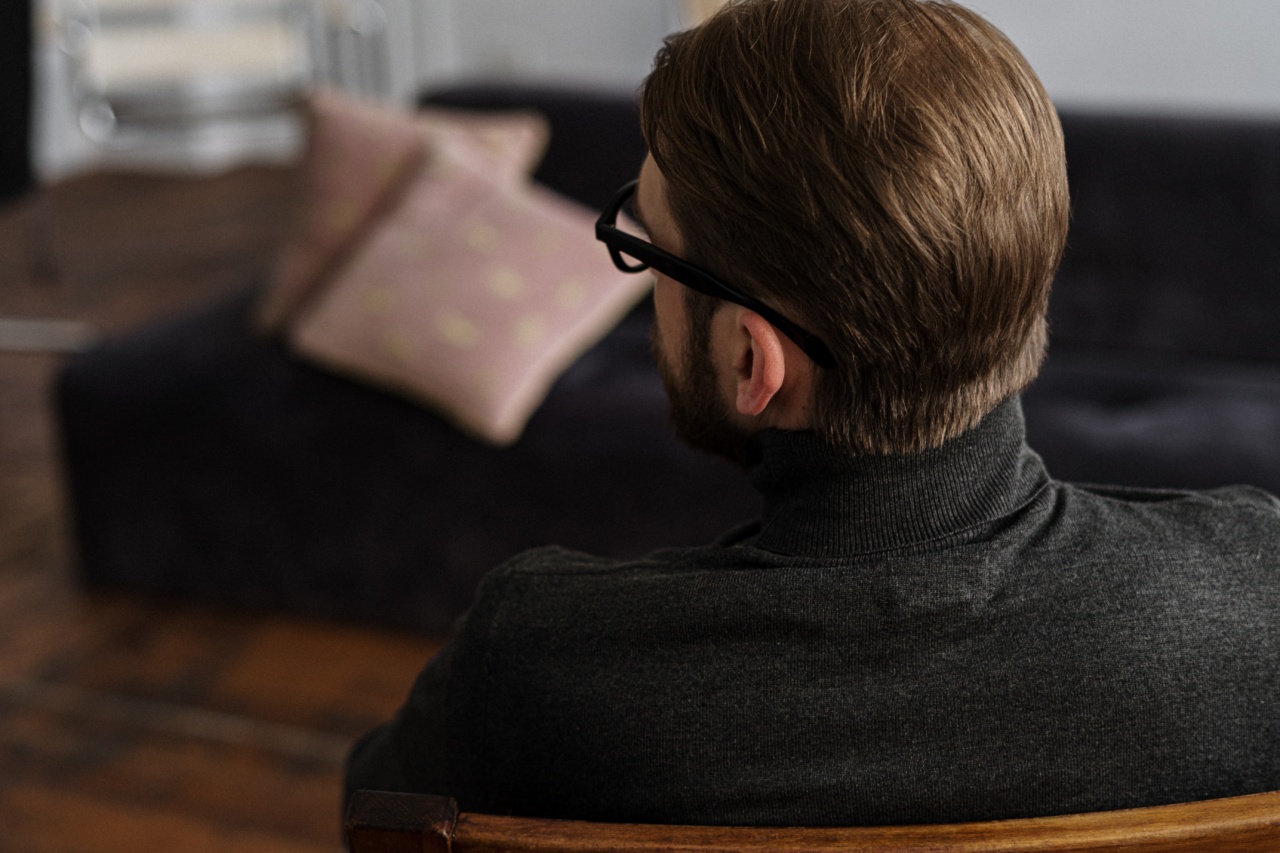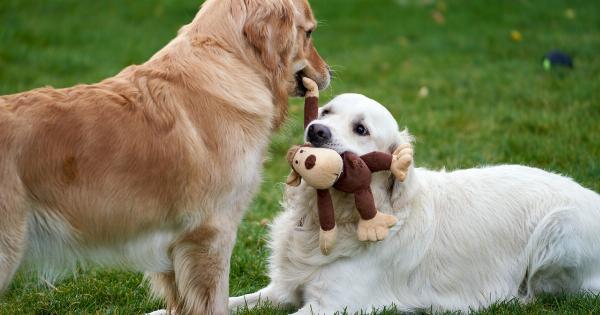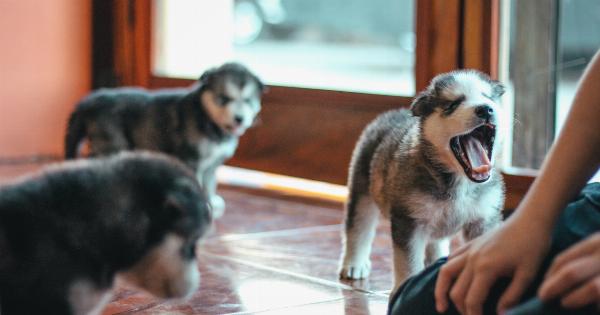Many dog owners have experienced their furry friends displaying possessive behavior over their toys. Whether it’s growling, snapping, or refusing to share, possessiveness can be a concerning and frustrating issue for dog owners.
Understanding the psychology behind a dog’s possessiveness with toys can help us address this behavior and create a harmonious environment for both the dog and its owner.
1. Instinctual Nature
Dogs are descendants of wolves, which were highly territorial and protective of their resources. This instinctual nature can manifest in their possessive behavior over toys.
Dogs consider their toys as valuable possessions and may guard them to ensure their availability for future use.
2. Resource Guarding
Resource guarding is a behavior exhibited by many animals, including dogs, to protect their valued possessions. Toys, food, and even personal space can be considered valuable resources by a possessive dog.
They guard these resources as a survival instinct, preventing other animals or individuals from taking away what they perceive as their own.
3. Lack of Proper Socialization
Proper socialization is essential for dogs to develop positive behavior patterns and healthy relationships with other dogs and humans.
Dogs that have not been adequately socialized may exhibit possessive behavior due to fear or anxiety when unfamiliar individuals or animals approach their toys. This behavior is often rooted in a lack of trust and a natural response to protect what they perceive as theirs.
4. Past Traumatic Experiences
Dogs who have had traumatic experiences in the past, such as abuse, neglect, or being deprived of resources, are more likely to display possessive behavior.
These experiences can create a sense of insecurity and the need to protect their resources as a means of survival. Such dogs may be hypersensitive to any potential threat, leading to possessiveness over their toys.
5. Reinforcement of Possessive Behavior
While unintentional, dog owners can unknowingly reinforce possessive behavior in their pets.
Often, dog owners mistakenly reward their dog’s possessiveness by giving in to their demands or removing potential threats without addressing the underlying behavior. This reinforcement encourages the dog to continue displaying possessive behavior as it learns that it is an effective means of getting what it wants.
6. Lack of Hierarchy and Boundaries
A dog’s possessiveness can also stem from a lack of clear hierarchy and boundaries within their household. Dogs thrive in environments where they have a clear understanding of their position within the social structure.
When a dog perceives itself as the “alpha” or dominant member, it may exhibit possessive behavior over toys and other resources as a way to maintain control.
7. Insecurity and Fear
Insecurity and fear are common underlying factors behind a dog’s possessive behavior. Dogs that lack confidence or have past traumatic experiences may use possessiveness as a defense mechanism against potential threats.
Possessing and guarding toys can give them a sense of security and control in an uncertain environment.
8. Lack of Training
Proper training plays a significant role in shaping a dog’s behavior. Without consistent and positive reinforcement training, dogs may not understand appropriate behavior when it comes to sharing and relinquishing toys.
This lack of training can contribute to possessiveness as the dog doesn’t have the necessary skills to interact and share toys appropriately.
9. Medical Conditions
In some cases, possessiveness over toys may be linked to underlying medical conditions. Pain, discomfort, or hormonal imbalances can contribute to a dog’s insecurities and exacerbate possessive behavior.
It’s essential to rule out any potential health issues that may be affecting the dog’s behavior before addressing possessiveness.
10. Stress and Anxiety
Dogs prone to stress and anxiety may exhibit possessive behavior as a coping mechanism. If a dog is insecure or anxious, it may develop possessive tendencies as a way to gain control over its environment and alleviate anxiety.
Reducing overall stress and providing a calm and stable environment can help alleviate possessive behavior.
Addressing a Dog’s Possessiveness
To address a dog’s possessiveness over toys, it’s crucial to approach the issue with patience, consistency, and positive reinforcement. Here are some strategies that can help:.
1. Teaching the “Drop It” Command
Training your dog to “drop it” or “leave it” on command can be an effective way to encourage them to relinquish toys willingly. Start with low-value toys and practice the command using positive reinforcement techniques.
Gradually progress to higher-value toys, always rewarding your dog when they comply.
2. Utilizing Desensitization Techniques
Desensitization involves gradually exposing your dog to situations where possessiveness may arise, such as having someone approach them while they’re playing with a toy.
Start at a distance where your dog remains comfortable and reward calm behavior. Gradually decrease the distance while maintaining a positive and calm environment.
3. Engaging in Interactive Play
Engaging in interactive play with your dog can help build trust and strengthen the bond between you. Use toys that encourage shared play and cooperation, promoting positive associations with toy interaction.
This can help alleviate possessiveness over toys and foster a sense of teamwork between you and your dog.
4. Establishing Consistent Rules and Boundaries
Consistency is key in addressing possessive behavior. Establish clear rules and boundaries regarding toy possession and sharing within your household.
Reinforce these rules consistently, ensuring that all family members or individuals interacting with your dog understand and follow them as well.
5. Gradual Toy Introductions with Others
If your dog displays possessive behavior specifically around other individuals, it’s important to introduce the concept of sharing toys gradually. Start by allowing the person to be present while your dog plays with their toys.
Gradually encourage the person to engage in play with the dog, rewarding both the dog and the individual for positive behavior and cooperation.
6. Seek Professional Help
If your dog’s possessive behavior persists or escalates despite your efforts, seeking professional help from a certified dog trainer or behaviorist may be necessary.
They can provide tailored advice and guidance based on your dog’s specific needs, helping you address the possessiveness effectively.
Conclusion
A dog’s possessive behavior towards toys can be attributed to a combination of instinctual nature, past experiences, reinforcement, and underlying psychological factors.
Understanding these underlying motivations is crucial in addressing and managing possessive behavior. By employing positive reinforcement training methods, establishing consistent rules, and providing a secure and enriching environment, owners can help their dogs overcome possessiveness and build healthier relationships with their toys and others.


























